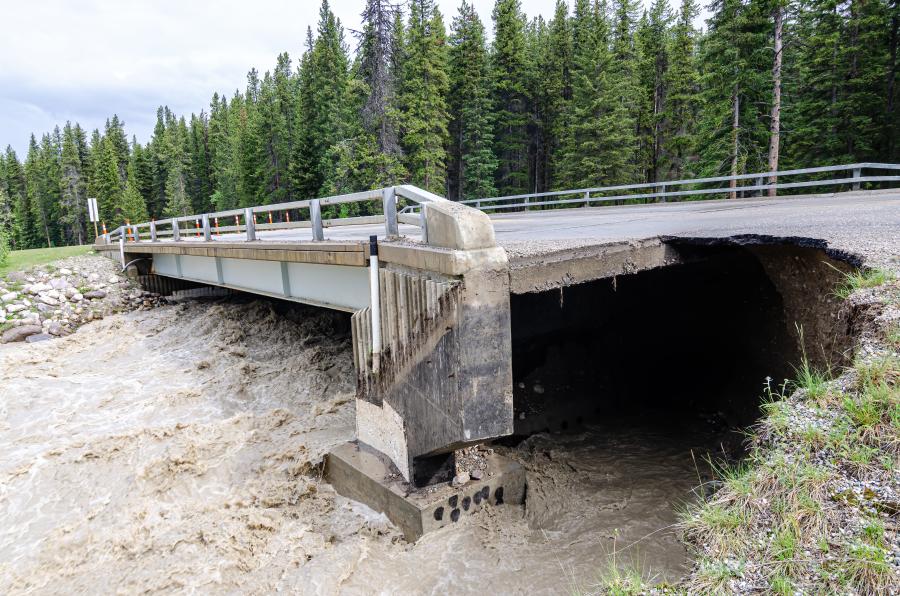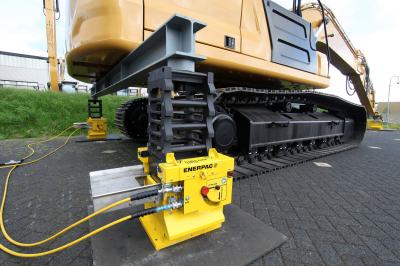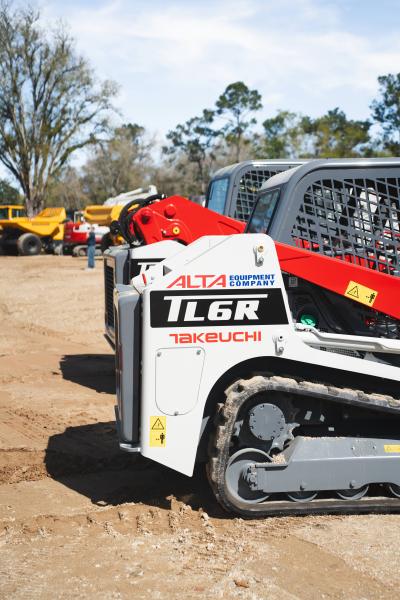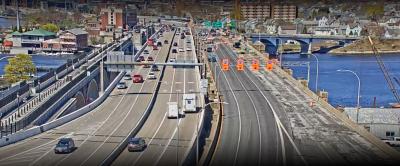Adobe Stock photo
Storms can take out a bridge. Hurricane Katrina is said to have caused major damage to 44 bridges, including the I-10 Twin Spans in New Orleans.
Hours after the Frances Scott Key Bridge in Baltimore collapsed, there was already talk about rebuilding. The Biden administration pledged $60 million toward reconstruction, but projections have the bottom line at more than $400 million. How soon can commuters, shippers and commercial enterprises expect a new structure in place? The word is it will take years.
The stories behind other notable bridge collapses, and their subsequent rebuilds, serve as a gauge of just how long a major rebuild can take.
Fern Hollow Bridge, Pittsburgh, 2022
On Jan. 28, 2022, the 49-year-old Fern Hollow Bridge collapsed, injuring 10 people. Under the deck, a 16-in. natural gas pipeline was severed.
Local residents were evacuated after reports of a massive gas leak. Officials shut down gas lines in the area within a half hour of the collapse.
Contracts for a replacement bridge were awarded without bid because of the emergency declaration.
Building a new rigid K-frame bridge was not practical because of steel lead times of more than 18 months.
Construction of a three-span continuous composite pre-stressed concrete I-beam bridge was to start in late April 2022, in sections. Design changes to match the aesthetic of nearby Frick Park and the adjacent neighborhoods pushed the start back to May 9, 2022.
The replacement bridge was structurally complete by December 2022. It opened to traffic on Dec. 21, 2022, with a single lane in each direction.
Work continued into spring 2023 to complete the full bridge design. The structure officially reopened on July 7, 2023.
I-35W Mississippi River Bridge, Minneapolis, 2007
On Aug.1, 2007, during rush hour, the central span of the I35W Mississippi River Bridge suddenly gave way, followed by its adjoining spans.
The structure and deck collapsed into the river and onto the riverbanks below. The south section topped 81 ft.; northern sections fell into a rail yard.
It was decided that replacement of the collapsed bridge would cross at the same location as the original. Due to the highway's function as a vital commuter and trucking link, the span was constructed on an accelerated schedule.
MnDOT announced on Sept. 19, 2007, that Flatiron Constructors and Manson Construction Co. would build the replacement bridge.
The new I-35W Saint Anthony Falls Bridge was opened to the public on Sept. 18, 2008.
The design-build project delivery method was utilized on this project, resulting in the bridge's opening three months ahead of schedule.
I-10 Twin Span Bridge, New Orleans, 2005
After Hurricane Katrina on Aug. 29, 2005, the Twin Spans were damaged extensively when the rising storm surge pulled bridge segments off their piers.
The eastbound span was missing 38 segments; another 170 were misaligned, while the westbound span was missing 26 segments; 265 were misaligned.
The damage to the Twin Spans and to U.S. Route 90 to the east left only one route into New Orleans from the east.
The Louisiana Department of Transportation & Development (DOTD) accepted a bid on Sept. 9, 2005, to reconstruct the bridges.
The reconstruction project started with the less damaged westbound span. Phase 1 was to reestablish two-way traffic on the eastbound span within 45 days. Scavenged bridge segments from the westbound span were used to fill in the gaps in the eastbound span.
On Oct. 10, 2005, the east span was reopened to traffic with one lane in each direction. The 43-day contract was completed 15 days ahead of schedule.
Phase 2 of the project, concurrent with Phase 1, involved repairs to the westbound span. Prefab steel bridge spans were used in two areas. The steel spans replaced both destroyed segments and those segments used on the eastbound span.
The west span reopened on Jan. 6, 2006, returning four lanes of traffic to flow once again.
The prefabricated steel segments required both a 45-mile-per-hour speed limit and weight restrictions on the westbound span. Additionally, the span was closed periodically for maintenance work, which was covered by Phase 3 of the original contract.
Following the Katrina damage, it was decided the old Twin Spans were too vulnerable to storm surge.
The long-term solution was two new taller spans. Ground broke on July 13, 2006, to build two new bridges 300 ft. east of the old spans.
This project constructed two three-lane bridges 30 ft. above the surface of Lake Pontchartrain, with an 80-ft. high rise.
I-40 Bridge, Webber Falls, Oklahoma, 2002
The I-40 bridge collapse in Webbers Falls, Okla., occurred on May 26, 2002, when barges on the Arkansas River collided with a pier supporting the bridge.
The failure of the supports that resulted from the collision caused a section of the bridge to collapse.
An estimated 20,000 vehicles per day were rerouted for approximately two months while crews rebuilt the bridge. Traffic resumed July 29, 2002.
The fact that it required just two months from disaster to reopening set a new national record for a project of this scope, normally approximately six months.
Queen Isabella Memorial Bridge, Port Isabel, Texas, 2001
On Sept. 15, 2001, four loaded barges crashed into one of the Queen Isabella Causeway bridge's support columns.
The collision caused two 80-ft. spans to fall into the river, leaving a 160-ft. gap in the roadway near the highest point of the causeway.
Because the causeway is the only road connecting the island to the mainland, the impact of the accident was significant. The bridge also carried electricity lines and fresh water to the island. State officials brought in ferries to temporarily carry cars across the Laguna Madre.
In addition to the three toppled bridge sections, two adjacent also were replaced because of structural damage.
The causeway was reopened on Nov. 21, 2001, with several safety features added to the structure. The support columns were reinforced, and a $900,000 fiber optic collapse warning system was installed.
Sunshine Skyway Bridge, Tampa, 1980
The southbound span of the original bridge was destroyed on May 9, 1980, when the 606-ft. freighter MV Summit Venture collided with a support column. This took place during a sudden squall, causing the catastrophic failure of more than 1,200 ft. of the span.
The main support pier nearest to the channel withstood the strike with only minor damage. However, a secondary support pier just to the south was not designed to withstand such an impact and failed catastrophically.
This failure resulted in the entire center of the southbound span collapsing at 7:38 a.m.
While the state considered replacement proposals, the undamaged northbound span was converted back to a two-lane, two-way bridge.
Ideas for the new structure included construction of a tunnel, deemed impractical, and a simple reconstruction of the broken section of the old bridge.
That, however, would not widen the narrow shipping lane. Gov. Bob Graham's idea to build a "signature" cable-stayed bridge won out.
The design featured a span that would be 50 percent wider than that of the old Skyway Bridge. The channel would be marked by a 1⁄4 mi.-long series of large concrete barriers. Support piers would be protected by massive concrete "dolphins."
Construction began in January 1983 with the pounding of pilings for the foundation, and work on the main piers began the following September.
After delays, an opening ceremony was planned for April 30, 1987. The day before, though, the new bridge's protective bumpers were hit head-on.
The bumpers sustained minor damage and the bridge was unaffected by the impact of the 74-ft. shrimp boat. Opening ceremonies proceeded as scheduled.
Tacoma Narrows Bridge, Tacoma, Washington, 1940
The 1940 Tacoma Narrows Bridge opened to traffic on July 1, 1940, and dramatically collapsed into Puget Sound on Nov. 7 of the same year.
Construction began in September 1938, and from the time the deck was built, it began to move vertically in windy conditions. The motion continued after the bridge opened to the public, despite several damping measures.
The bridge's main span collapsed in 40-mi.-per-hour winds on the morning of Nov. 7, 1940. The deck oscillated in an alternating twisting motion, which gradually increased in amplitude until the deck tore apart.
Efforts to replace the bridge were delayed by World War II. In 1950, a new Tacoma Narrows Bridge opened in the same location.
The new structure used the original bridge's tower pedestals and cable anchorages.
The portion of the bridge that fell into the water was transformed into an artificial reef. The replacement bridge was opened to traffic on Oct. 14, 1950, and is 5,979 ft. long, 40 ft. longer than the original.
The new span also has more lanes than the original bridge, which only had two traffic lanes, plus shoulders on both sides.
Half a century later, a second, parallel, suspension bridge was constructed to carry eastbound traffic. The new parallel bridge opened to traffic in July 2007. CEG
Today's top stories



















